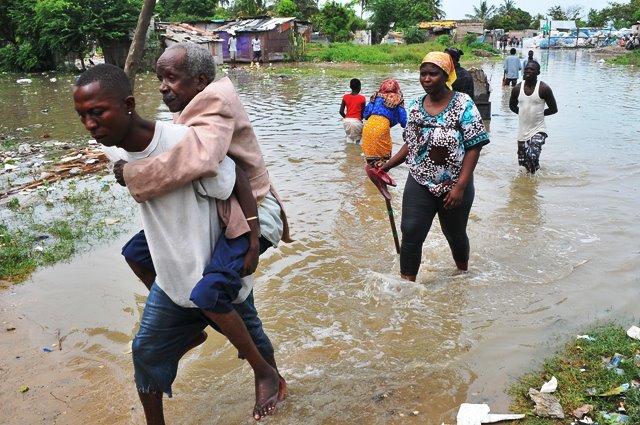America has been a diverse country since its inception (Banks & Banks, 2001). Many groups of people have migrated to the U.S in search of religious freedom, economic opportunity, and a better life for themselves and their children (Millet, 2000). Thus, America is often referred to as a country of immigrants. In the beginning, Continue reading “Diversity Issues in American Schools: An Overview”
Tag: Dar Es Salaaam
Micro Leadership Issues: K-12 Americana
In the past three weeks, we have been discussing six K-12 major educational issues related to instructional leadership at the micro level. The issues we discussed were: Principal and Teacher Opinions of walkthroughs, Teacher Professional Development, Administrators Training for TKES/LKES for walkthroughs, The Process of Recruiting Principals, The Number of Males vs Female Principals, and Teachers Opinions Continue reading “Micro Leadership Issues: K-12 Americana”
Phenomenological Study
According to Creswell (2013), a phenomenological study, “describes the common meaning of several individuals of their lived experience of a concept or a phenomenon.” There are two types of phenomenological studies. The first type is a heuristic phenomenological approach which brings to the fore the personal experience of the researcher (Moustakas, 1990b:9, as cited in Patton; 2002b). The second type is a transcendental phenomenological approach that involves the researcher bracketing themselves through acknowledging their experiences with the phenomenon under investigation (Creswell, 2013). I will use the transcendental phenomenological approach for my pilot study.
There are seven main features in a transcendental phenomenological study. These features include: a) deciding on a phenomenon to be explored, b) identification of a group of individuals who have experienced the phenomenon, c) a discussion of the theoretical framework guiding the phenomenological study, d) a discussion by the researcher regarding their personal experiences with the phenomenon (known as bracketing), e) a data collection procedure commonly involving interviewing individuals who have experienced the phenomenon, f) data analysis procedures that move from narrower significant statements to broader units and, g) a description of the essence of the individuals ‘shared experience.
In the next several paragraphs, I apply these seven steps to my dissertation topic. The phenomenon to be explored in my dissertation project is to investigate teachers’ shared experience using virtual labs in their classrooms. In my initial interview, I would like to ask six main questions to capture teachers’ experiences with virtual labs. These questions include:
1) Tell me about your educational and professional background.
- Probe: How did you become an educator?
2) What is your teaching philosophy?
3) How do virtual labs fit within this philosophy?
4) How did you learn about virtual labs?
- When did you start using them?
- Why did you decide to use virtual labs in your classroom?
5) What do you see as barriers and benefits to using virtual labs with your students?
6) What adaptations (if any) did you make to ensure that all students in your class benefit from virtual labs?
While conducting the pilot study, teachers’ experiences with virtual labs will be the main focus or what Creswell (2013) calls “the phenomenon to be explored.” I intend to use a sample size of two teachers who have experience using virtual labs with their students to explore this phenomenon. This number is well below what Creswell (2013) suggests in his book. Creswell (2013) advises that a phenomenological study should be conducted with a heterogeneous group of at a minimum 3 to a maximum of 15 individuals. Given time constraints, I will only be able to interview two teachers. I am concerned that this sample size will not be sufficient for me to determine the essence of the lived and shared experiences of teachers who have used virtual labs in their classroom. In addition, the teachers I have chosen are both new to the profession. They each have two years of teaching experience and therefore they have only two years of using virtual labs with their students. I am afraid that the two teachers I have chosen may present a homogeneous rather than a heterogeneous group. Therefore, the teachers I have chosen may not provide a comprehensive picture of teachers’ experiences using virtual labs. In other words, a larger sample size (more than two individuals) consisting of teachers with varied amount of experiences would have given me a richer understanding of teachers ‘experiences using virtual labs. Despite these limitations, I feel that conducting this pilot study will give me the experience and skills I need to conduct a rigorous qualitative exploration using a phenomenological approach as part of my dissertation..
An example of a well-conducted study using a phenomenological approach can be found in the article entitled “A Phenomenological Study –Cognitive Representations of Aids” by Anderson and Spencer (2002). In this study, the authors wanted to “describe AIDS patients’ cognitive representation of their illness.” The authors used a purposive sample of 41 men and 17 women. To be eligible for the study, participants had to: have an AIDS diagnosis, be 18 years or older, be able to communicate in English, and have a mini-mental status exam score of greater than 22. This study shows the rigor that must be met to conduct a phenomenological study. In my study, I have also set clear inclusion criteria. To be eligible for my study, teachers must have at least two years teaching experience, be currently using virtual labs in their classroom, be a high school science teacher, be able to communicate in English. The sample size used by Anderson and Spencer (2002) is more aligned with the guidance given by Creswell (2013). As previously mentioned, I plan to interview just two teachers for my pilot study. If I use a phenomenological approach in my dissertation, I will need to increase the number of teachers that I interview in order to get a clearer picture of the range of teacher experiences’ using virtual labs.
Since I am a researcher and also an educator who uses virtual labs in my classroom, it will be necessary for me to acknowledge and bracket these experiences during my study. Creswell (2013) states in conducting a phenomenological study it is necessary for the researcher to acknowledge their experiences, especially when the researcher has experienced the phenomenon under investigation. Anderson and Spencer (2002) acknowledged in their article that they provided health care to persons living with HIV and AIDS. In addition, they explicitly stated that none of the participants in the study were and/or had been their patients. I found myself in a similar position with these researchers in my attempts to conduct this pilot study. First and foremost I am an educator. I have a lived experience with virtual labs. Second, I am a researcher. I will be interviewing people that I work with on a daily basis. Therefore, it is essential for me to acknowledge these experiences so that I will be able to approach the lived virtual labs experience with a sense of newness (Patton, 2002b). This will help me to set aside the feelings and perceptions I have experienced with this phenomenon to be able to reach a better understanding of other teacher experiences’ using virtual labs in the high school setting.
During the data collection phase, I plan to interview high school teachers who have used virtual labs in their classroom. These interviews will be my only source of data collection. Creswell (2013) suggests using varied sources of data in a phenomenological study including poems, observations, and documents in addition to interviews. Anderson and Spencer (2002), in their phenomenological study with AIDS patients, used several methods of data collection including interviews, paper-and-pencil questionnaires, drawings, journals, music, and other forms of documentation. These varied methods of data collection helped them to triangulate and validate their findings. Furthermore, it helped them to describe the essence of the lived experience for persons living with HIV/AIDS in a much richer way. I have learned from Anderson, Spencer, and Creswell that I must include varied methods of data collections to capture the essence of teachers’ lived experience with virtual labs in their science courses. In my actual dissertation, I plan to use a combination of data collection methods including in-depth interviews, paper-and-pencil questionnaires, and observations to increase my understanding of teachers’ experiences using virtual labs.
To analyze the data from my pilot study, I will transcribe the interviews verbatim. On the transcripts of these interviews, I will highlight significant statements, quotes, and sentences. I will then use these statements, sentences, and quotes to build my understanding of how the teachers experienced virtual labs. Finally, I will write a composite description of the similarities and differences in how the teachers experienced the use of virtual labs in their science classrooms.
In summary, there are many lessons learned from this analysis. First, the best sample size for a phenomenological study is between 5 to 25 participants. My pilot study only includes a sample size of two teachers. Thus, I will need to increase the sample size of teachers that I interview for my dissertation. Second, I am relying on a single method of data collection for my pilot study. However, I will need to use a variety of data collection methods during my dissertation to gain a richer understanding of teachers’ experiences with virtual labs. Third, since I will be using the transcendental phenomenological approach, it is imperative that I acknowledge my experiences with virtual labs (bracketing) so that I can be able to look at the participants’ experiences with a fresh set of eyes or what Patton (2002b.9) calls looking with “a sense of newness.” Fourth, to elicit a deeper and richer understanding of teachers’ experiences with virtual labs the set of questions I have developed needs to be streamlined. My questions are a little too broad and may need some refining for my actual dissertation study. I got some ideas for how to refine these questions during the interviews I conducted as part of my pilot study.
For my next analysis, I will use a case study approach to guide my qualitative inquiry. This analysis will help me determine if a case study approach is better suited to explore teachers’ shared and lived experiences with virtual labs.
References
Anderson, E., & Spencer, M. (2002). A phenomenological study: cognitive representation of AIDS. Qualitative Health Research, 12(10), 1338-1352.
Creswell, J. W. (2013). Qualitative Inquiry and Research Design: Choosing Among Five Approaches (3rd ed). Thousand Oaks, CA: SAGE Publications, Inc.
Patton, M. Q. (2002b). Variety in qualitative inquiry: Qualitative research and evaluation methods (3rd ed.). Thousand Oaks, CA: SAGE
Suggestions for Teaching English to Native Swahili Speakers.
Shaaban Fundi,
Last week I conducted several interviews with Swahili speaking students at a local community college in Atlanta. Amongst the interviewees: three were from the Democratic Republic of Congo, one from the United Republic of Tanzania and four were from the republic of Burundi. The eight students spoke Swahili with different dialects.
By definition, Swahili or Kiswahili is a “Bantu language spoken by various ethnic groups inhabiting a large Indian Ocean Coastal stretch from Mozambique to Somalia”. The countries include: Tanzania, Kenya, Uganda, Rwanda, Comoro, Burundi, Malawi, Zambia, and Congo DRC.
I learned from the interviews that Standard Swahili has 5 vowels phonemes. The vowels are: a, e, I, o, u. And that the vowels are never reduced, regardless of stress. The vowels are pronounced as follows:
“a” is pronounced like the “a” in pasta
‘e’ is pronounced like the “e” in bed
‘i’ is pronounced like the “i” in ski
‘o’ is pronounced like the “o” in “or”
‘u’ is pronounced like the “oo” in “bassoon”.”
I also learned that like in numerous Bantu languages, Swahili arranges nouns into a number of classes. The ancestral system had 22 classes. Counting singular and plural as distinct according to the Meinhof System. Most Bantu languages share at least ten of these noun classes. Swahili employs sixteen nouns classes: six classes usually indicate singular nouns, five classes usually indicate plural nouns, one class for abstract nouns, one class for verbal infinitives used as nouns, and three classes to indicate location.
Some examples of the nouns classes are presented below:
“class semantics prefix singular translation plural translation
1, 2 persons m-/mu-, wa- mtu person watu persons
3, 4 trees, natural forces m-/mu-, mi- mti tree miti trees”
As seen above, Swahili is a very complex language and differs significantly from the English language. The vowels are pronounced the way they are written while in the English language the vowels carry different sounds from the written expression. This difference in particular causes a huge challenge to students who are learning English as a second language from the Swahili speaking cultures. Students from Swahili speaking countries struggle with intonation and word sound relationships in English because this is a very different system from that of Swahili or Kiswahili.
Implication in the classroom instruction
It is very important for educators to understand the linguistic similarities and differences between Swahili and English to have an opportunity to help students like the ones I interviewed. In addition, Swahili has a different system for singular and plural to that used in the English language. The addition of vowels to words does not exist in the Swahili language. Thus, making it harder for Swahili speakers to learn the English language.
Opportunity in classroom instruction:
It would be helpful to educators who teach content specific course to understand the linguistic similarities and differences between Swahili and English. This understanding will help them to anticipate when and where Swahili speaking students will have challenges learning the English language. This understanding will provides educators with an opportunity to help students for Swahili speaking nations to be engaged in their own learning and also in using the new language for other content specific courses.
Educators need to develop lessons that will focus more in helping students new to the English language understand the differences and similarities between the two languages and use the opportunity to highlight how to overcome those differences. For example, educators can start by teaching the students the English alphabet, vowels and word sounds. This will help the students to understand where the two languages are similar and where they differ.
After students have mastered word sounds, educators can go further into reading, writing and comprehension of the English language. The step by step instruction will help many ESOL students to become fluent English speakers and writers and in turn this will have a significant impact on how the ESOL students excel in the content classrooms.
References:
1.Prins, A.H.J. 1961. “The Swahili-Speaking Peoples of Zanzibar and the East African Coast (Arabs, Shirazi and Swahili)”. Ethnographic Survey of Africa, edited by Daryll Forde. London: International African Institute.
2.Prins, A.H.J. 1970. A Swahili Nautical Dictionary. Preliminary Studies in Swahili Lexicon – 1. Dar es Salaam.
3.Whiteley, Wilfred. 1969. Swahili: the rise of a national language. London: Methuen. Series: Studies in African History.
4.Brock-Utne, Birgit (2001). “Education for all — in whose language?” Oxford Review of Education 27 (1): 115–134.










